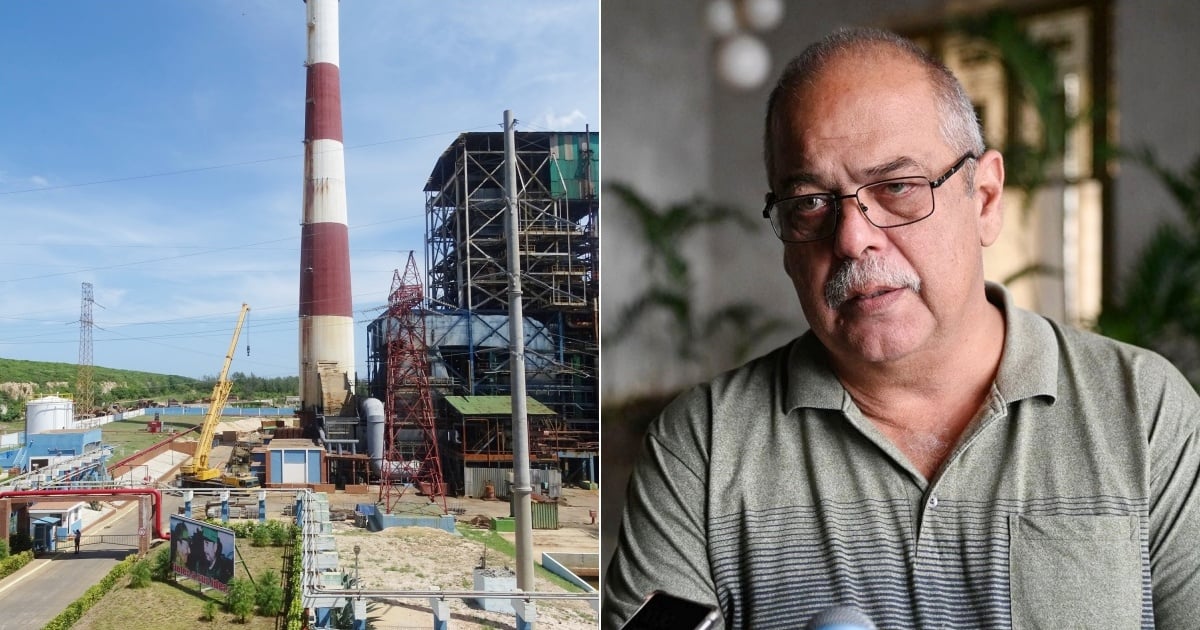Vicente de la O Levy, Cuba's Minister of Energy and Mines, has provided an update on the progress of restoring the island's power system. He forecasted a significant improvement by Monday afternoon with the anticipated operation of the Antonio Guiteras Thermoelectric Plant, which is reportedly ready to go online. "In western Cuba, particularly in Havana, conditions have improved substantially, with over 56% of customers now receiving electricity. We aim to maintain uninterrupted service until this afternoon when the Antonio Guiteras plant will be operational," he stated during an interview with the Cuban Presidency's communication team.
According to De la O Levy, once the plant is online, it will add substantial capacity. This, combined with power from Hanabanilla and plants in central and eastern provinces, is expected to transfer around 200 MW to those regions. After the most recent electrical system failure, efforts to recover began immediately.
"We followed a similar procedure to previous recoveries but with a more composed approach, reactivating Energás units. Nearly all Energás units are now synchronized, except for one, which allowed us to restore service in Havana and activate floating power plants in the Bay. Furthermore, we synchronized the Mariel plant, which also helped improve the situation," he explained.
He added that the inclusion of the Nuevitas Thermoelectric Plant has improved power supply in the eastern region, the area most affected until now. De la O Levy highlighted Granma's unique situation, where an "energy island" has enabled over 40% of customers to have electricity.
Eastern Power Grid Developments
"With the synchronization of the Diez de Octubre plant, Granma's energy island, and the Santiago de Cuba floating power plant, eastern power stations are coming online. Soon, we'll activate the Felton plant and Moa engines to complete the system," he added. Although the hurricane is not directly hitting Felton or Santiago de Cuba, winds could impact the 220 KV lines connecting Felton and Renté, and the situation is being closely monitored.
In Guantánamo, the most affected municipalities are Baracoa and Maisí, where resources and crews are prepared to intervene once the weather improves. "With enhancements at the Renté and Felton plants, Guantánamo will also experience an immediate improvement in its electrical situation," he concluded.
On Monday morning, it was reported that following the disconnection of the National Electric System (SEN) on Sunday afternoon, the National Electric Union (UNE) altered its strategy to segment the power supply into independent regional systems. This measure aims to ensure system stability amid Cuba's ongoing energy crisis.
The decision to divide the power grid into zones is designed to mitigate future outages and enhance energy stability in each area. A recent SEN disconnection was triggered by an incident at the Diez de Octubre Thermoelectric Plant in Nuevitas, Camagüey. Without providing specifics, the regime claimed to be tirelessly working to restore the national power network.
Since last Friday, when the SEN completely failed, Cubans have endured prolonged and widespread blackouts, disrupting daily life across the nation. On Saturday, during recovery efforts from the total outage, the system collapsed again, erasing the limited electricity reaching a few thousand users and undermining hopes of overcoming the crisis.
That same day, Matanzas province faced a general blackout following an issue in the micro power system startup. Significant malfunctions have also been reported at the Carlos Manuel de Céspedes Thermoelectric Plant in Cienfuegos and generation block No. 3 of the Antonio Maceo Thermoelectric Plant, also known as Renté, in Santiago de Cuba. The latter incident led to a micro-system failure affecting Santiago de Cuba and Guantánamo, leaving them without power.
